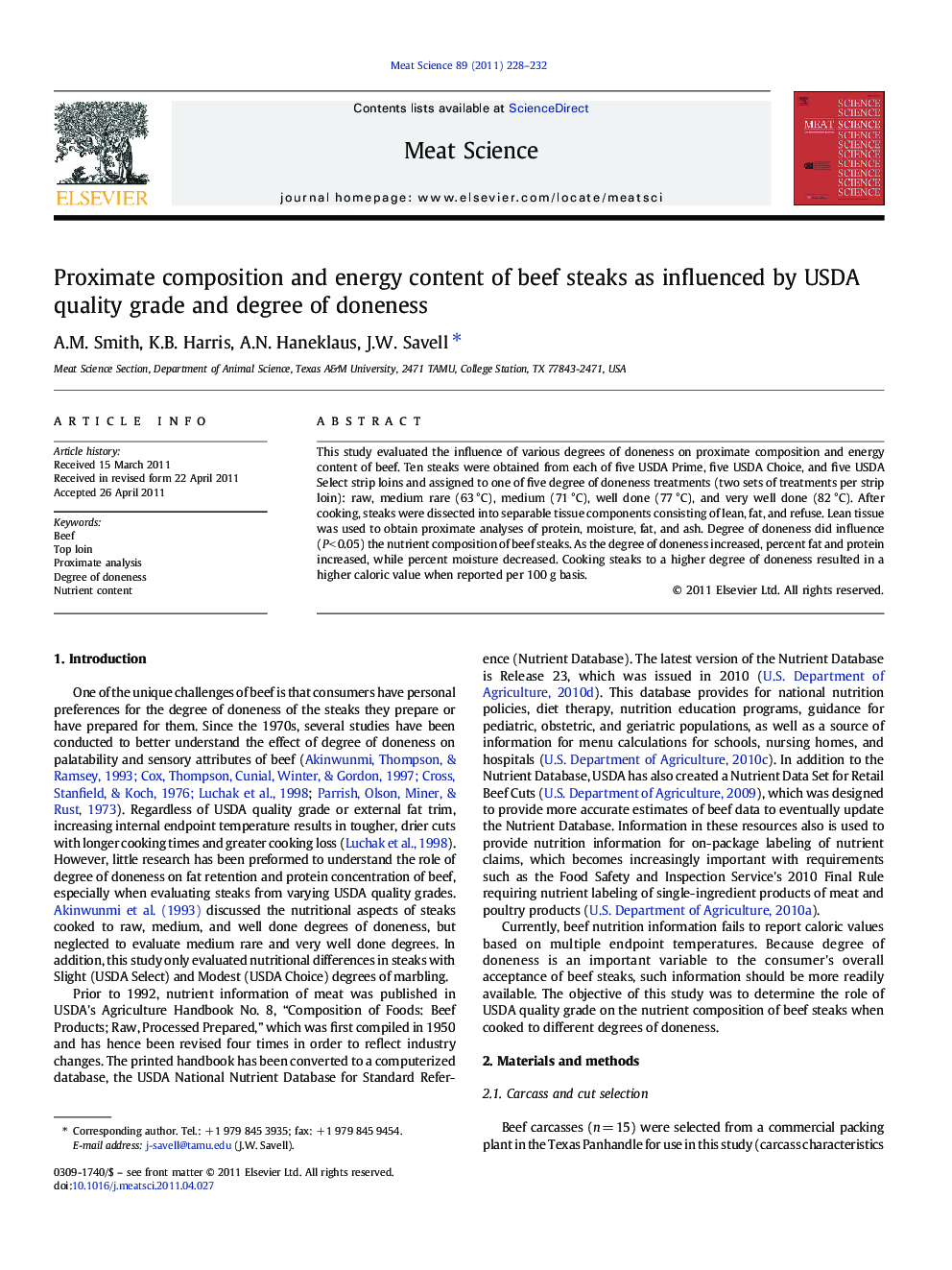| Article ID | Journal | Published Year | Pages | File Type |
|---|---|---|---|---|
| 2450407 | Meat Science | 2011 | 5 Pages |
This study evaluated the influence of various degrees of doneness on proximate composition and energy content of beef. Ten steaks were obtained from each of five USDA Prime, five USDA Choice, and five USDA Select strip loins and assigned to one of five degree of doneness treatments (two sets of treatments per strip loin): raw, medium rare (63 °C), medium (71 °C), well done (77 °C), and very well done (82 °C). After cooking, steaks were dissected into separable tissue components consisting of lean, fat, and refuse. Lean tissue was used to obtain proximate analyses of protein, moisture, fat, and ash. Degree of doneness did influence (P < 0.05) the nutrient composition of beef steaks. As the degree of doneness increased, percent fat and protein increased, while percent moisture decreased. Cooking steaks to a higher degree of doneness resulted in a higher caloric value when reported per 100 g basis.
► We evaluated top loin steaks from three different USDA quality grades and cooked to different degrees of doneness for proximate composition and energy content. ► Degree of doneness influenced the nutrient composition of beef steaks. ► As the degree of doneness increased, percent fat and protein increased, while percent moisture decreased. ► Cooking steaks to a higher degree of doneness resulted in a higher caloric value when reported per 100 g basis.
